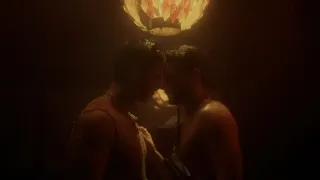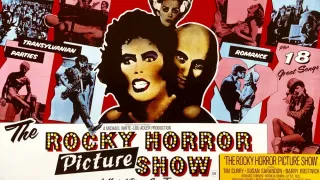
3 hours ago
Guillermo del Toro Reveals the Striking Reason He Cast Jacob Elordi as Frankenstein’s Monster
READ TIME: 3 MIN.
Guillermo del Toro, renowned for his groundbreaking approaches to genre cinema, has ignited anticipation for his upcoming adaptation of Mary Shelley’s classic novel Frankenstein by revealing the remarkably specific reason behind his casting of Jacob Elordi as the Creature. In a series of interviews leading up to the film’s world premiere at the Venice Film Festival, del Toro explained that Elordi’s “eyes are so full of humanity,” a trait he saw as essential for his interpretation of the character .
Elordi, who gained international recognition for his roles in Saltburn and Euphoria, joined the Frankenstein project after Andrew Garfield withdrew due to scheduling conflicts . Del Toro said his decision was cemented after watching Elordi’s performance in Saltburn, where he played a character marked by both vulnerability and complexity. “I loved his innocence and openness. He plays the victim of a Tom Ripley-type of character, and I thought he played it with a lot of range,” del Toro told Variety. “His character was also capable of being high class and cruel. Jacob’s eyes are so full of humanity. I cast him because of his eyes” .
Del Toro’s vision for Frankenstein’s monster diverges sharply from traditional portrayals. Instead of opting for the grotesque or emphasizing scars and sutures, the director described wanting the Creature to look “beautiful, like a newborn thing.” He rejected the idea of the monster resembling “an accident victim,” instead seeing the character’s creator, Victor Frankenstein (played by Oscar Isaac), as “much an artist as he is a surgeon,” with the monster’s “cuts to make aesthetic sense” .
This approach resonates with ongoing conversations in the LGBTQ+ community about the importance of representing vulnerability, transformation, and chosen family in media. The Frankenstein myth—long interpreted as a metaphor for otherness and the quest for acceptance—finds renewed relevance through del Toro’s lens, which privileges empathy and complexity over fear and revulsion . For many LGBTQ+ viewers, the Creature’s story has historically reflected experiences of alienation and the longing for understanding, making this nuanced portrayal especially resonant.
Del Toro’s Frankenstein also stands out for its commitment to practical effects and traditional artistry. “I want real sets. I don’t want digital. I don’t want AI. I don’t want simulation. I want old-fashioned craftsmanship. I want people painting, building, hammering, plastering. I go in and paint props myself. I supervise the construction of the sets. There is an operatic beauty when you build everything by hand,” he declared . This hands-on approach echoes values of authenticity and collaboration championed in queer and trans art spaces, where community-driven storytelling and tangible creation are often celebrated.
Alongside Elordi and Isaac, the film features Charles Dance as Victor’s father and Christoph Waltz as his patron . Del Toro has described the film as his “Mount Everest” project, a work decades in the making that explores the existential questions at the heart of Shelley’s original novel: “Why did you put me here? Why didn’t you give me the answers? What do I have to learn in my suffering?” .
The casting of Elordi, an actor who has cultivated a sizable LGBTQ+ following through his open-minded approach to roles and collaborations, has generated excitement among queer audiences eager for thoughtful representation. The Frankenstein narrative’s enduring power as a metaphor for the outsider—someone created and judged by others, yet yearning for connection—continues to speak to LGBTQ+ experiences of resilience, transformation, and self-acceptance.
Frankenstein will debut at the Venice Film Festival on August 30 and will have a limited theatrical release via Netflix on October 17, before streaming worldwide on November 7 . Early images and teasers have already sparked discussions about the film’s fresh approach, with many expressing hope that del Toro’s vision will honor the story’s queer-coded legacy while inviting new audiences to empathize with its iconic monster .






